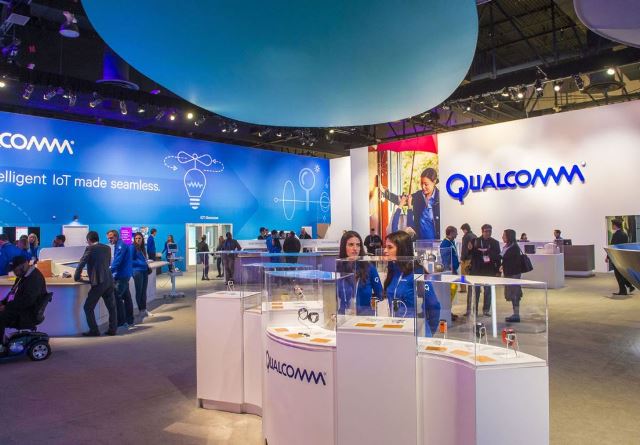Qualcomm is struggling to supply its processor chips used in smartphones and gadgets, as a chip shortage spreads across the electronics business, Reuters reported.
 Samsung Electronics, the world’s largest smartphone maker, is experiencing a shortage of Qualcomm’s application processors, which power smartphones.
Samsung Electronics, the world’s largest smartphone maker, is experiencing a shortage of Qualcomm’s application processors, which power smartphones.
Demand for Qualcomm’s chips has soared in the past months as Android phone makers seek to win over customers abandoning phones produced by Huawei Technologies due to U.S. sanctions. Qualcomm has found it hard to meet this higher-than-expected demand, in part due to a shortage of some subcomponents used in its chips.
The size of the global smartphone AP market was $25 billion (+25 percent) in 2020, according to a Strategy Analytics report.
Qualcomm has maintained its lead in the smartphone AP market with a 31 percent revenue share, followed by Apple with 23 percent and HiSilicon with 18 percent.
The US-China trade war has affected HiSilicon, the third largest chipset supplier, in 2020. HiSilicon saw its smartphone AP shipments drop 20 percent in 2020.
Apple, MediaTek, Qualcomm and Samsung LSI will capture the market share left by HiSilicon in 2021. “We believe Qualcomm is well-situated to capture HiSilicon’s premium-tier share with its Snapdragon 888 and 870 offerings,” Stephen Entwistle, vice president of the Strategy Analytics Strategic TechnologiesPractice, said.
Sources at a Samsung supplier said a Qualcomm chip shortage was hitting production of mid- and low-end Samsung models. Sources at another supplier said there was a shortage of Qualcomm’s Snapdragon 888, but did not say whether this was affecting the manufacturing of Samsung’s high-end phones.
A Samsung Electronics spokesman declined to comment. A Qualcomm spokesman pointed to public comments by executives on Wednesday in which they reiterated they believe they can hit a fiscal second quarter sales forecast given in February.
Sources at a contract manufacturer for several major smartphone brands said it was facing a shortage of a range of components from Qualcomm and would cut handset shipments this year.
Last month, Lu Weibing, a vice president for Chinese handset maker Xiaomi, lamented the chip crunch. “It’s not a shortage, it’s an extreme shortage,” he wrote on Weibo, China’s Twitter-like social network.
A surge in demand for consumer electronics has driven a global chip shortage that has idled car factories. The shortage has so far centered largely on chips made using older technology rather than the advanced phone processors Qualcomm designs.
Qualcomm’s constraints show how problems in one area of the complex chip supply chain can bleed into others and how fast-changing market dynamics can trip up chip companies that must set mass production plans years in advance.
“We still have our demand basically higher than supply,” Qualcomm incoming Chief Executive Cristiano Amon told investors during the company’s annual meeting on Wednesday.
Qualcomm’s flagship application processor, the Snapdragon 888, is still new. Key parts of it come from Samsung Electronics’ separate chipmaking division and use a new 5-nanonmeter manufacturing process that is hard to scale up quickly.
A Samsung factory in Texas, which makes some of Qualcomm’s radio frequency transceivers, was also forced to halt operations last month due to power shortages caused by winter storms, though it is unclear whether the effects of that stoppage have yet trickled down to smartphone makers.
Qualcomm’s lineup of application processors contain power management chips made with older technology by companies including China’s Semiconductor Manufacturing International Corporation and Taiwan Semiconductor Manufacturing Co.
“You need a full kit,” said Stacy Rasgon, an analyst with brokerage Bernstein. “If you can’t get them, you can’t build whatever it is you want to build. Supply chains are global and very tightly integrated. It’s set up for efficiency, but it’s less resilient.”
Qualcomm is directing supply of power management chips towards its profitable Snapdragon 888 application processors to match what Samsung’s foundries can build, but that is hurting supplies of lower-end Qualcomm application processors.
China’s Xiaomi procures the majority of its chips from Qualcomm and Taiwan’s MediaTek.
The chip shortage, which has prompted panic buying, is squeezing capacity and driving up costs of even the cheapest components of nearly all microchips.
For instance, a commonly-used microcontroller-unit chip from STMicroelectronics originally priced at $2 now sells for $14, according to Case Engelen, CEO of Titoma, a contract designer and manufacturer.
Simon Wan, co-founder of the Chinese robotic vacuum cleaner brand Roborock, said the company’s chip suppliers are asking for larger deposits on chip orders. He’s paying to ensure stock.
“Everyone is placing orders like crazy, when in fact they can’t even use up all their chips,” said Wan, who declined to name his chip suppliers.
Smaller companies are hurting more.
Fabien Gaussorgues, who runs an electronics factory in the southern Chinese city of Dongguan, said supply issues have worsened since December.
His company was on track to mass produce a smart-home device designed by an overseas client before the Chinese New Year. But a shortage of key chipsets from Japan’s Murata delayed the launch by three weeks, he said, forcing him to eventually use a slightly weaker chipset as a substitute.
Meanwhile, some of his other clients have delayed projects indefinitely. “We have seen components where we see a six-week lead time, and then the week after it’s ten weeks, and then a week later it’s one year,” he said.





